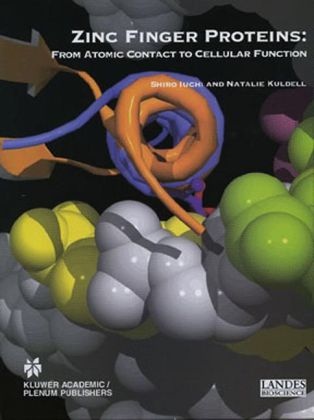Ulteriori informazioni
Zinc Finger Proteins is the first book to systematically assemble knowledge of various zinc finger proteins belonging to several families and to describe features of zinc finger proteins at levels ranging from atomic to cellular and to organismal. Significance of zinc itself is also addressed as are important domains often associated with zinc fingers.
This book is an ideal resource for students who want to learn about zinc finger proteins as well as for scientists who work on gene expression, signal transduction, differentiation, development, cancer and neurological diseases.
Sommario
From the contents:
Applications in Gene Regulation.- C2H2 Zinc Fingers As DNA Binding Domains.- TFIIIA GAGA- DNA Interaction.- The DNA-Binding Domain of GATA Transcription Factors A Prototypical Type IV Cys2-Cys2 Zinc Finger.- MutM: Single C2C2 Zinc Finger-DNA Interaction.- Homing Endonuclease I-TevI: An Atypical Zinc Finger with a Novel Function -Zinc Finger Interactions with Metals and Other Small Molecules.- Synthetic Zinc Finger Transcription Factors.- TFIIIA and p43: Binding to 5S Ribosomal RNA.- RNA Binding by Single Zinc Fingers.- Wig-1, a p53-Induced Zinc Finger Protein that Binds Double Stranded RNA.- Tandem CCCH Zinc Finger Proteins in mRNA Binding 80- Ribosomal Zinc Finger Proteins: The Structure and the Function of Yeast YL37a.- LIM Domain and Its Binding to Target Proteins.- RING Finger-B Box-Coiled Coil (RBCC) Proteins As Ubiquitin Ligase in the Control of Protein Degradation and Gene Regulation.- Structure and Function of the CBP/p300 TAZ Domains.- A Zinc Ribbon Motif Is Essential for the Formation of Functional Tetrameric Protein Kinase CK2.
Riassunto
In the early 1980s, a few scientists started working on a Xenopus transcription factor, TFIIIA. They soon discovered a novel domain associated with zinc, and named this domain "zinc finger. " Th e number of proteins with similar zinc fingers grew quickly and these proteins are now called C2H2, Cys2His2 or classical zinc finger proteins. To date, about 24,000 C2H2 zinc finger proteins have been recognized. Approximately 700 human genes, or more than 2% of the genome, have been estimated to encode C2H2 finger proteins. From the beginning these proteins were thought to be numerous, but no one could have predicted such a huge number. Perhaps thousands of scientists are now working on C2H2 zinc finger proteins fi-om variou s viewpoints. This field is a good example of how a new science begins with the insight of a few scientists and how it develops by efforts of numerous independent scientists, in contrast to a policy-driven scientific project, such as the Human Genome Project, with goals clearly set at its inception and with work performed by a huge collaboration throughout the world. As more zinc finger proteins were discovered, several subfamilies, such as C2C2, CCHC, CCCH, LIM, RING, TAZ, and FYVE emerged, increasing our understanding of zinc fingers. The knowledge was overwhelming. Moreover, scientists began defining the term "zinc finger" differently and using various names for identical zinc fingers. These complications may explain why no single comprehensive resource of zinc finger proteins was available before this publication.

